Review: Graham Nash & Judy Collins Are an Unstoppable Team at Carnegie Hall
The two legends rock Carnegie Hall on Tuesday 10/1
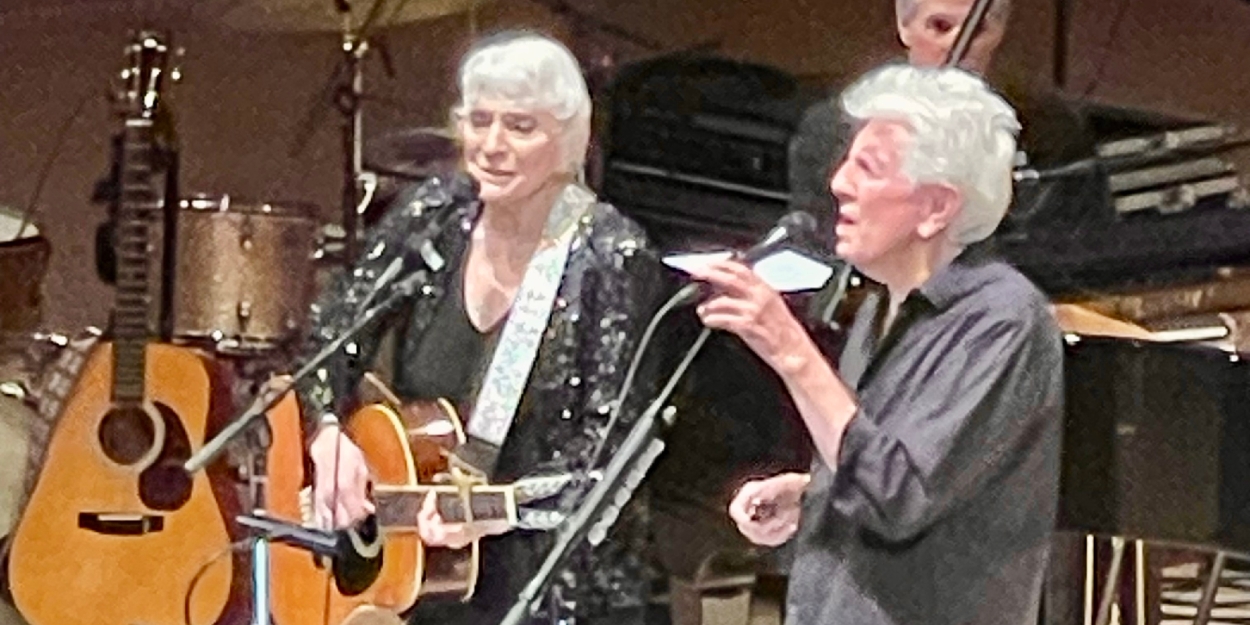
Graham Nash has never been comfortable with the moniker of rock star. Despite having been inducted into the Rock & Roll Hall of Fame twice, once as the founder of the British group The Hollies, and once as one-third of Crosby, Stills & Nash, he has never embraced the typical trappings of a rock legend. His clothes are comfortable, not flashy, and his stories, studded with the names of the rock pantheon are more matter-of fact than self-aggrandizing. At 82, his act is still about the music and not about himself.
He is as vital as ever, in remarkably good voice, and much more forward-looking than you would expect a member of the Woodstock generation to be. His show last night at the venerable Carnegie Hall was filled with enthusiastic fans, good vibes, and music that is not simple but is uncluttered by a lot of technology. Despite the large number of instruments on the stage, and far from being acoustic, the four men in the band including Nash created a clarity of sound that is refreshing in an era of overly processed tunes. Graham’s songs are classic gems that go straight from the artist's heart to the hearts of fans listening to the soundtrack of their lives.
The show was billed as “An Evening of Songs and Stories With Special Guest Star Judy Collins.” That is a bit of an understatement as Collins occupied the entire first act of the evening. At 85, Judy Collins can still deliver the ethereal high notes that made her a one-of-a-kind vocal instrument. She is still, at heart, a folk singer. In fact, she paid tribute to The Weavers, who she caught as a young woman at Carnegie Hall as one of her primary influences. Her voice is fuller than it used to be and it has the benefit of decades of experience in it. She lives inside lyrics more richly and maturely.
She opened with her hit rendition of Joni Mitchell’s “Both Sides Now.” It is a song that just gets better with age. The rest of her set included some of her biggest hits, including “When I Was a Girl in Colorado,” “Suzanne,” and “Diamonds and Rust.” She was particularly poignant in “The Blizzard,” reminding us that she is one of the great storytellers of popular music. The biggest hit of her career was her cover of Stephen Sondheim’s “Send in the Clowns.” Her reading is now even more rueful and layered than when she first recorded it. She closed her set with a duet with Graham Nash. The two harmonized masterfully on her tune “Helplessly Hoping.”
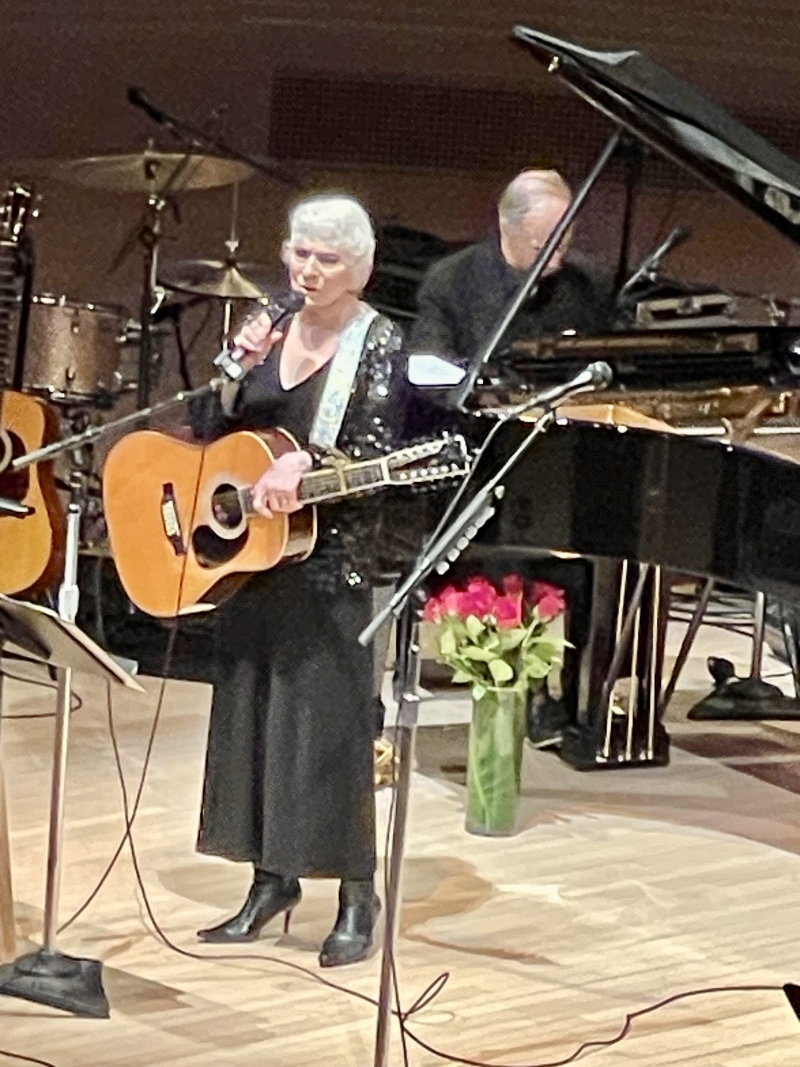
The second half was all Graham Nash and his band of consummate musicians. They laid a large rug center stage which gave the proceedings the feeling of being in a comfortable living room and not the austere glory of Carnegie Hall. They opened with the Crosby, Stills & Nash hit “Wasted on the Way.” It is typical of the repeated theme of the fleetingness of time and making every second count. Nash told a story of taking a train from Casablanca to Marrakesh and writing the song “Marrakesh Express” along the way. It indicates Nash’s uncanny ability to write straight from his life experience. He followed with “No More War,” a song written in protest to the conflict in Vietnam which later became the unofficial anthem of the Occupy Wall Street movement. He ended the first section of the concert with one of The Hollies biggest hits, “Bus Stop.” The wonderful minor key tonality gave it the slightly melancholy color of a memory play.
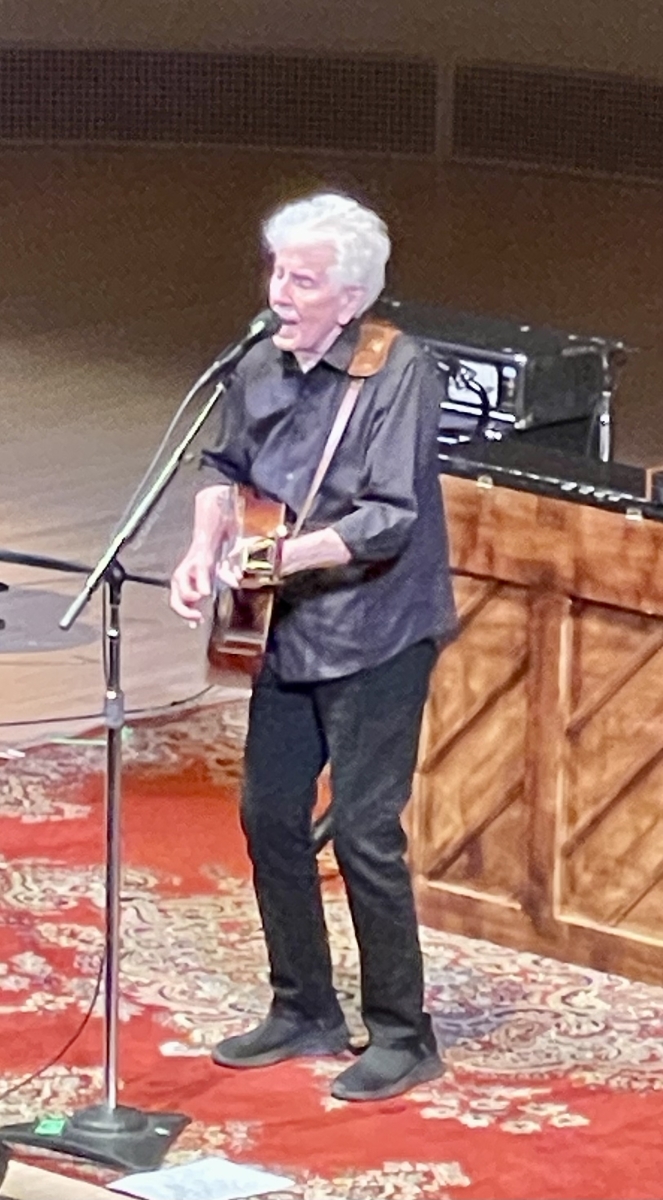
He followed with the very theatrical grandeur of “Critical Mass/ Wind on the Water.” Again explaining a very personal genesis, Nash explained how “Immigration Man” came about as the result of being left behind at the Canadian border due to a visa issue. In light of current events, the song felt entirely current. The most impressive vocalizing came in the rhapsodic rock anthem “Better Days.” It came from a starkly emotional place.
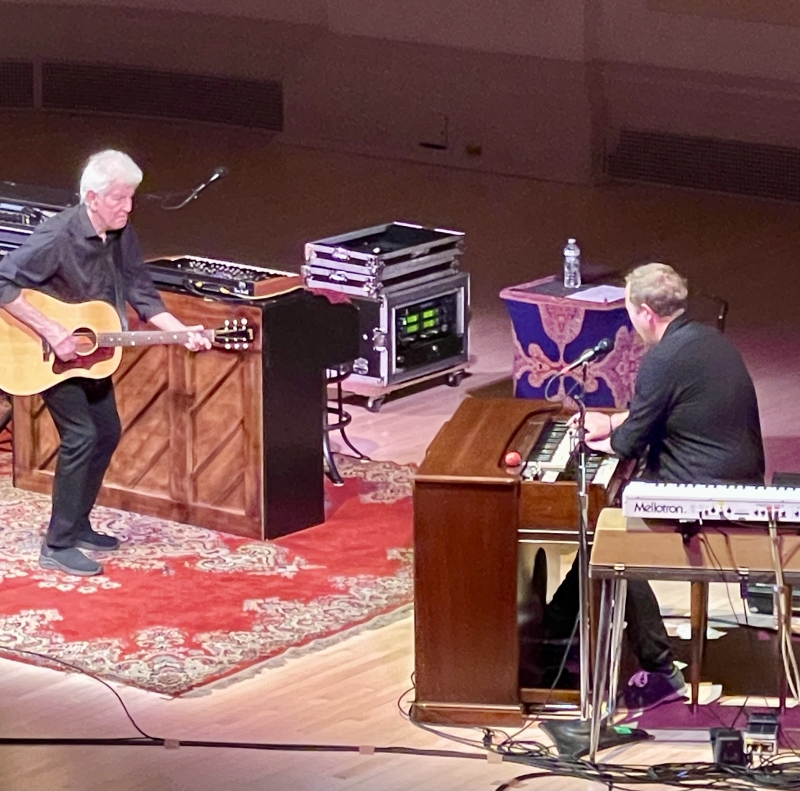
The last section of the night was a parade of impressive hits. First the extremely popular ‘Love the One You’re With” which became a very moving audience sing-along. He told the very amusing story of how he came to write “Just a Song Before I Go.” It was written on a bet by a tourist in Hawaii, that he couldn’t write a song in the hour before he had to hop on a plane to leave. Naturally, he won that bet. He told a story of a morning of eating and antiquing with Joni Mitchell. Based on the vase she bought that morning, in an hour he wrote “Our House.” It was an astounding story about being inspired by the simplest of events. As an encore, we were treated to a beautifully harmonized version of “Teach Your Children” which elicited an immediate and vigorous standing ovation.
Graham Nash and Judy Collins have been friends for decades. Seeing either of them would have been an honor. Seeing them together was an embarrassment of riches. Their down-to-earth manner belies the fact that they are musical legends who still have much to say about the art of music-making and storytelling. Seeing them at Carnegie Hall, a space long associated with showcasing the cream of American excellence is entirely appropriate. It was an evening to remember.
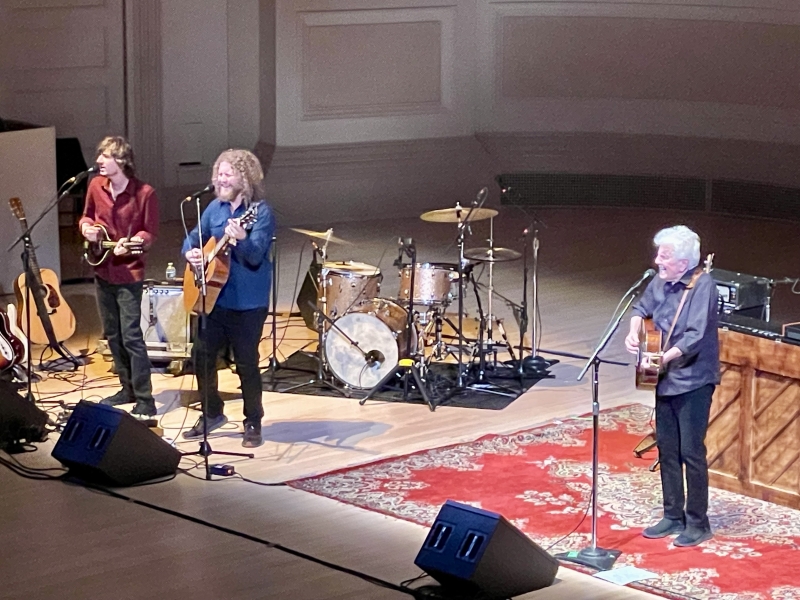
To learn more about Judy Collins, visit her website, judycollins.com
For more about Graham Nash, check out grahamnash.com.
For tickets to other great shows at Carnegie Hall, see carnegiehall.org.
Reader Reviews
Videos

